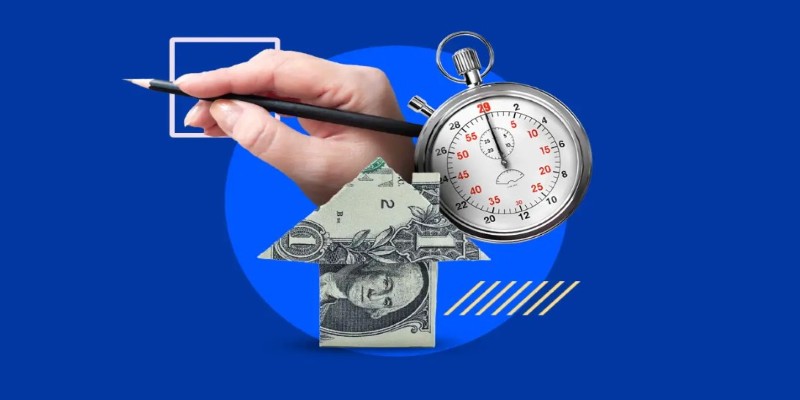Most people don’t think about mortgage forbearance until they absolutely have to—and by then, the clock's already ticking. It's one of those terms that sits in the background of financial paperwork, unread and ignored until a missed paycheck or unexpected expense drags it into the spotlight. So, let's not wait for the panic to set in. Here's what mortgage forbearance actually means, how it works, and what you need to know before deciding if it’s the right move.
The Basics—What Mortgage Forbearance Really Is
When someone’s facing a short-term financial setback, forbearance steps in like a pause button on your mortgage. It’s not a forgiveness program. Your lender isn’t erasing what you owe or wiping the slate clean. Instead, they’re giving you time—temporary relief from having to make your full mortgage payments, or in some cases, any payments at all.
The missed payments don’t disappear. They're just postponed. Depending on the agreement, you may owe them in a lump sum, spread out over time, or tacked onto the end of your loan term. But the key idea is this: forbearance gives you breathing room without pushing you into default right away.
Think of it as damage control. It’s the lender saying, “We know you’re in a tough spot—let’s figure out a plan that keeps you in your home while you get back on track.”
When Forbearance Comes Into Play
There’s no one-size-fits-all moment when forbearance should be used, but it usually comes up when something disrupts your ability to pay—things like job loss, medical expenses, or a natural disaster. The 2020 crisis made this term more common as millions of homeowners were offered temporary payment relief under federal programs. But those programs have faded; what remains is the original purpose of forbearance: a stopgap when you're facing genuine, short-term hardship.
It’s also not something you get automatically. You must request it, and your lender must approve it. And even then, the terms vary. One person might get a three-month break with payments due at the end. Another might get six months with repayment spread out over the following year. There's no set format—it depends on your lender, your loan, and your specific situation.
How the Process Works—Step by Step
Let’s break it down without fluff. If you're thinking about asking for forbearance, here's how the process typically goes:
Step 1: Contact Your Mortgage Servicer

Before anything else, you have to pick up the phone or log into your mortgage portal. There’s no button labeled “Forbearance Now.” You’ll need to speak to a representative or submit a formal request. Don’t assume that just being late on payments gets you enrolled.
Be honest and specific. Lenders want to know what’s going on—why you can’t pay, how long you expect that to last, and whether you’ve had any similar issues before. If you’re not sure how to explain it, just stick to the facts: when the problem started, what caused it, and how it affected your ability to pay.
Step 2: Submit Required Documentation
Some lenders are flexible, but many will ask for proof. This could be a layoff notice, medical bill, or even just a written explanation of your hardship. The faster you get this in, the faster your lender can review your case.
Note: If your loan is backed by a government agency like Fannie Mae or Freddie Mac, you might qualify under specific forbearance guidelines. That could speed things up or standardize the terms.
Step 3: Review the Terms Offered
Once approved, your lender will outline the details. This is where you need to pay close attention. Are they suspending your payments entirely or just reducing them? How long is the pause? What happens when the period ends?
Some lenders offer repayment options that begin immediately after forbearance ends, while others allow you to defer the missed payments until the loan matures. Read every word. If something’s unclear, ask—don’t assume.
Step 4: Keep Track During the Forbearance Period
This isn’t the time to forget about your mortgage. Keep all communications. Monitor your statements. If anything changes in your situation—say, you return to work earlier than expected—let your servicer know. You might be able to shorten the forbearance or adjust your plan.
Step 5: Prepare for Repayment

Forbearance ends, and repayment begins. If you haven’t already discussed what this will look like, now’s the time. Some lenders offer a repayment plan that divides your missed payments over a certain number of months. Others may offer a loan modification, or they may allow you to resume your normal payments and pay the past-due amount later.
It all comes down to communication. If you stay silent and fall behind again, you could face foreclosure—just like if forbearance had never happened.
The Impact on Your Credit
This is where things get a little tricky. Technically, forbearance itself doesn’t hurt your credit score. If it’s officially approved and documented, your lender will report that you're under a forbearance plan—not that you're late or delinquent. That’s good.
But let’s say you stop paying without telling your servicer or miss a deadline after the forbearance ends. That’s when the red flags go up. So, while forbearance won’t damage your credit directly, mishandling it might.
Also, keep in mind that future lenders will still see that you've been in forbearance. It's not a black mark, but it's visible. If you're planning to refinance or apply for a new mortgage soon, that could come up in the conversation.
Final Thoughts
Mortgage forbearance isn’t a free pass, and it’s not a long-term fix. It’s a temporary relief tool for homeowners who hit a bump in the road—not a cure for long-standing financial trouble. Used correctly, it can help you stay on your feet and protect your home during a difficult time.
The key is awareness. Know what you’re agreeing to. Stay in contact with your lender. And don’t wait until you’re behind—because once you're in default, your options start to shrink. So, if you're considering forbearance, treat it seriously. Ask questions, read the fine print, and make a clear plan for what comes next.












